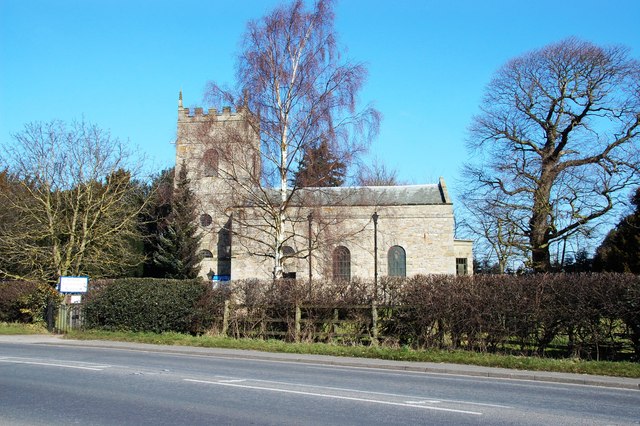All Saint's Church Rempstone - History

The site of the old Parish church of All Saint's, also called St Peter in the Rushes, is in the fields three quarters of a mile N.W. of the present church and makes a pleasant walk over a clearly defined line from the corner of the church car park. St Peter's was built near an existing Manor house and a settlement grew up around it. The area was, as the name implies, marshy and the people who lived there gradually discarded it and moved to more solid terrain this side of the established route from Nottingham to Loughborough, which had been turnpiked in 1737.
The Act was necessary to allow money to be raided to repair the road, to be recouped by Tolls, taken at Cotes Bridge and Trent Bridge. The old houses fell or were pulled down and by the middle of the 18th century St. Peter's stood isolated. It was a stone built church with a chancel, nave, and side aisles and it possessed a tower with three bells.
In the 1730's it was kept in good repair and the inside was regularly whitewashed. However by the 1770's it had deteriorated into a ruinous state and a new site was granted for the establishment of the present church. The tower of the new church bears the date 1771 on an inside stone, about half way up the spiral staircase, perhaps marking the point the masons had reached by this date. The church however was not consecrated until October 1773 by the then Archbishop of York, who came by coach and six from Nottingham.
The remains of the old church have long since disappeared. But much of the stone was reused in the new building and other fragments appear in houses such as Hrempis Farm and Grange Farm, the latter housing some of the original 18th century oak panelling with carved detail. The original bowl of the font from St Peter's is still being used in the present church. All that remain at St Peter's are some slate gravestones with fine copperplate lettering and two railed tombs with detailed inscriptions.
The area of our landscape still holds many snippets of Rempstone heritage. Swithland slate from the old churchyard is to be seen affixed to the front of the present Church and is to the memory of George Goodman (died 1695) and his wife (1749). This was originally found in the grounds of Silver Birches on Main Street covering a water cistern.


